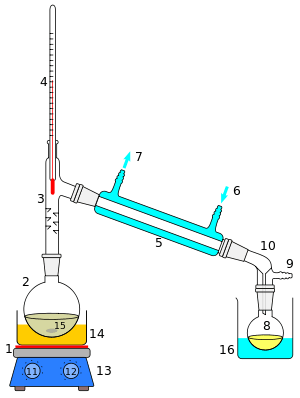Short-path distillation
Short-path distillation is a distillation technique that involves the distillate travelling a short distance, often only a few centimeters, and is normally done at reduced pressure.[1][2] A classic example would be a distillation involving the distillate travelling from one glass bulb to another, without the need for a condenser separating the two chambers. This technique is often used for compounds which are unstable at high temperatures or to purify small amounts of compound. The advantage is that the heating temperature can be considerably lower (at reduced pressure) than the boiling point of the liquid at standard pressure, and the distillate only has to travel a short distance before condensing. A short path ensures that little compound is lost on the sides of the apparatus. The Kugelrohr is a kind of a short path distillation apparatus which often contain multiple chambers to collect distillate fractions.

See also
References
- Harwood & Moody 1989, p. 150
- Hickman, K. C. D. (2002-05-01). "High-vacuum Short-path Distillation-A Review". Chemical Reviews. 34 (1): 51–106. doi:10.1021/cr60107a002.

